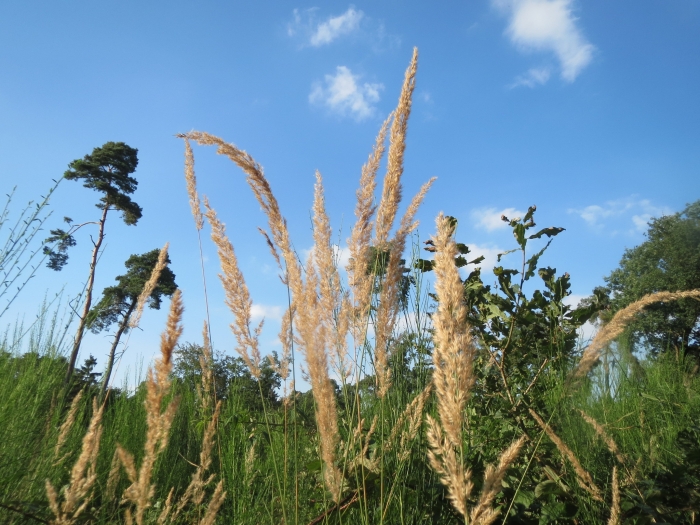Wood Small-Reed
(Calamagrostis epigejos)
Wood Small-Reed (Calamagrostis epigejos)
/
/

Andreas Rockstein
CC BY-SA 4.0













































Estimated Native Range
Summary
Wood Small-Reed is valued for its architectural form and the textural contrast it provides in garden settings. It is often used in naturalistic plantings, as well as in borders and as a screen. This grass is appreciated for its low water requirements and its ability to thrive in a range of soil types, from clay to loam, provided they have medium drainage. It prefers full sun but can tolerate light shade. While it is relatively low-maintenance, it can become invasive due to its vigorous rhizome growth, so its spread should be monitored. In regions where it is known to be invasive, its use should be avoided or carefully managed.CC BY-SA 4.0
Plant Description
- Plant Type: Grass
- Height: 3-4 feet
- Width: 1-3 feet
- Growth Rate: Moderate
- Flower Color: N/A
- Flowering Season: Spring, Summer
- Leaf Retention: Deciduous
Growth Requirements
- Sun: Full Sun
- Water: Medium, High
- Drainage: Medium
Common Uses
Bird Garden, Deer Resistant, Drought Tolerant, Low Maintenance
Natural Habitat
Open woodlands, grasslands, and riparian zones across Eurasia and Africa
Other Names
Common Names: Bushgrass, Chee Reedgrass, Feathertop Reed Grass, Bjerg-Rørhvene, Land-Reitgras, Calamagrostide Commune, Calamagrostide Épigéios, Calamagrostis Commun, Roseau Des Bois, Duinriet
Scientific Names: , Calamagrostis epigejos, Agrostis epigejos, Calamagrostis epigejos var. epigejos, Calamagrostis epigejos subsp. meinshausenii, Calamagrostis epigejos subsp. glomerata, Calamagrostis epigejos var. capensis, Calamagrostis glomerata, Calamagrostis rigens, Calamagrostis epigeios subsp. densiflora
GBIF Accepted Name: Calamagrostis epigejos (L.) Roth